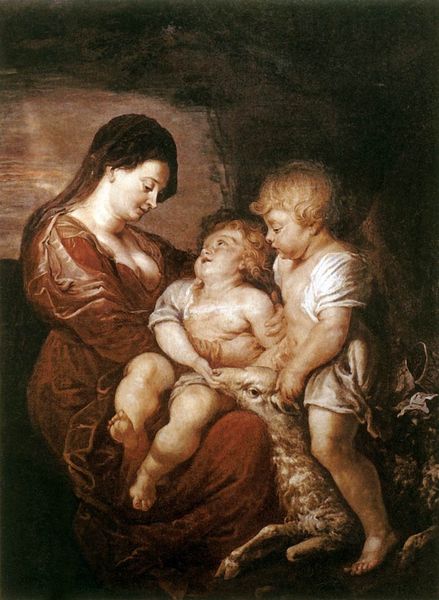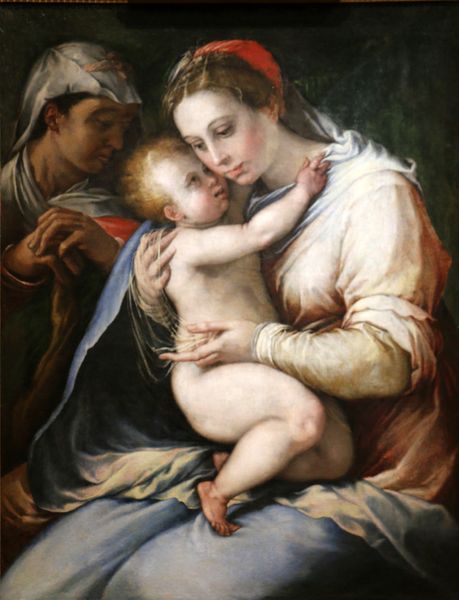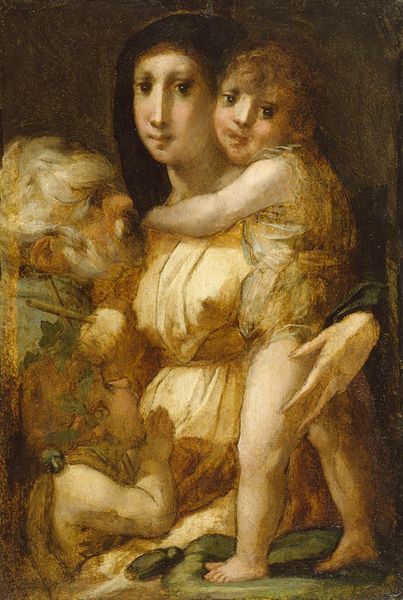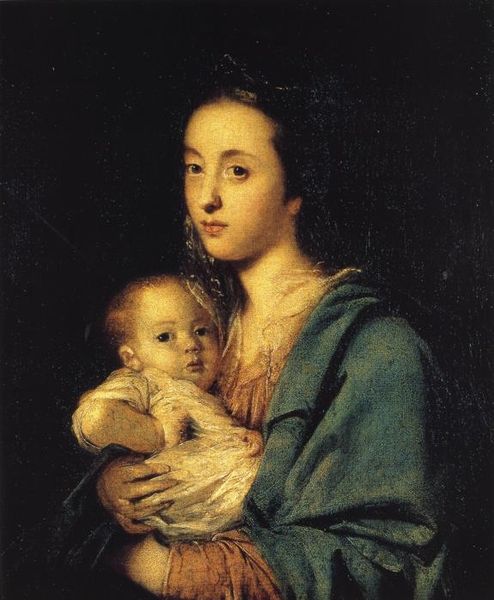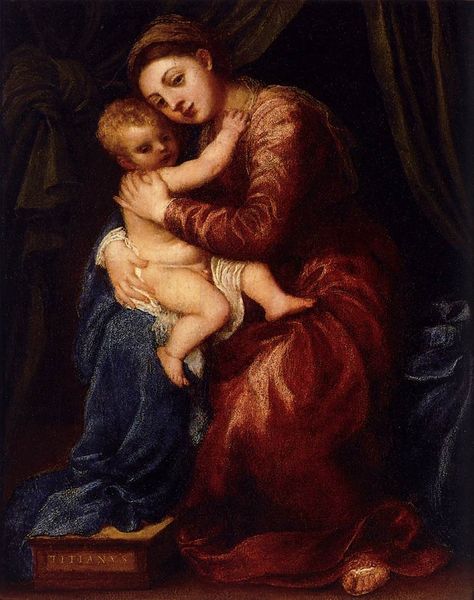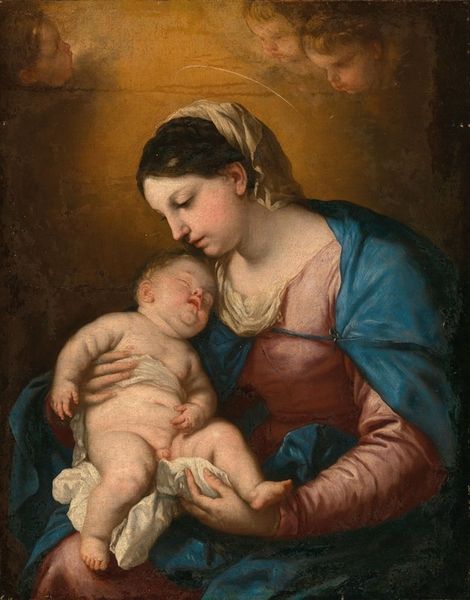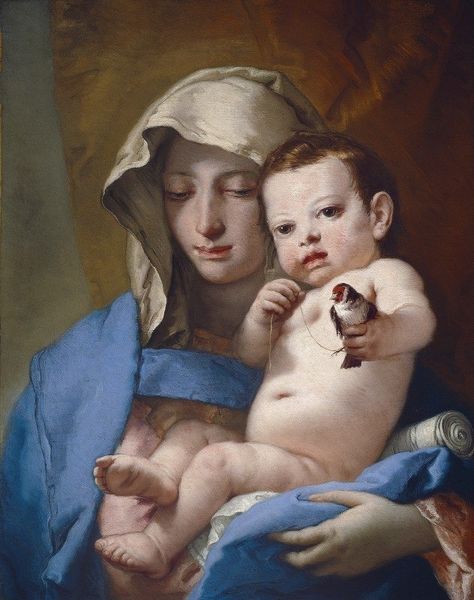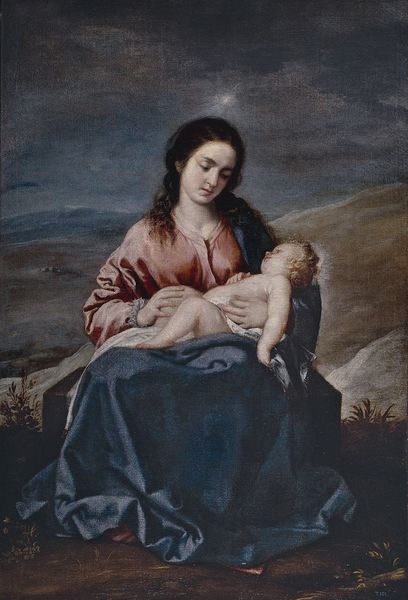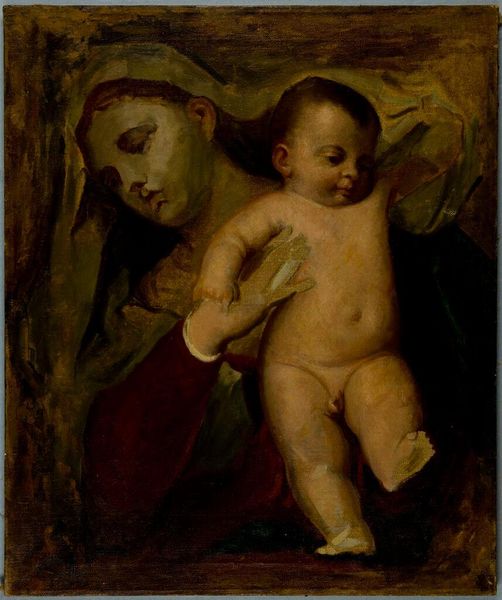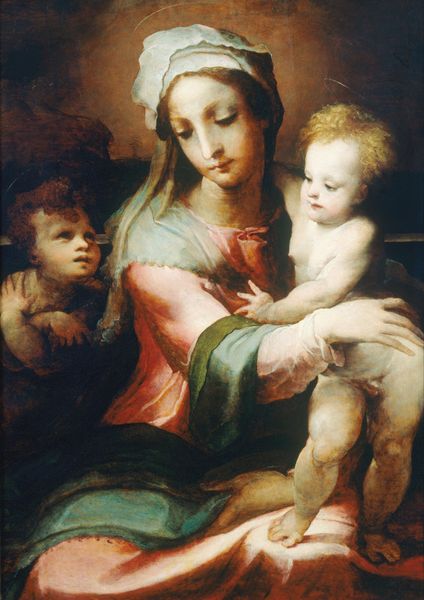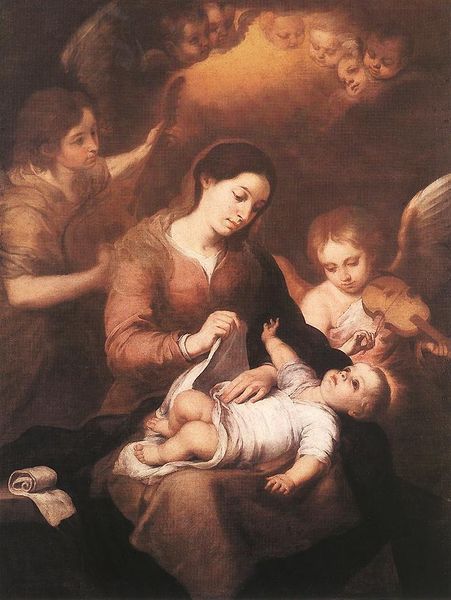
painting, oil-paint
#
high-renaissance
#
venetian-painting
#
narrative-art
#
painting
#
oil-paint
#
figuration
#
chiaroscuro
#
history-painting
#
italian-renaissance
Dimensions: 75 x 63 cm
Copyright: Public domain
Curator: Here we have Titian’s “Madonna and Child,” painted around 1570, a prime example of the Venetian High Renaissance style rendered in oil. Editor: The first thing that strikes me is the deep chiaroscuro, that strong contrast between light and shadow. It creates a very intimate and almost melancholic atmosphere, even with the tenderness of the subject. Curator: That play of light and shadow is certainly characteristic of Titian's late period. We must consider the political and religious tensions of the time; the Counter-Reformation heavily influenced artistic expression, favoring devout, emotional imagery over the more overtly sensual art of the early Renaissance. Editor: Right, and think about the materiality here. The way Titian applies the oil paint looks almost gestural in places, especially in the drapery. It’s far removed from the smooth, porcelain-like finish of earlier Renaissance masters. There is an element of art making and process on display, even in its present state. Curator: Yes, and the intimate pose. It’s not simply a depiction of motherhood. It is of female vulnerability and perhaps speaks to wider social inequalities for women throughout history. Even the dark backdrop obscures everything except the Madonna and child in direct contrast to those values. Editor: It makes me think about where Titian sources his materials, as the materiality would affect this art in his life and also during restoration efforts. What workshop practices were like. Curator: Looking at it with a modern lens, this could represent the burdens women have been facing for centuries, as women in history have often been subject to restrictive social and patriarchal forces that deny them power or freedom. I wonder about the models themselves? How was Madonna styled? It asks questions about their place in that socio-political climate and this representation is symbolic. Editor: Well, however heavy it may be, you’re certainly right to ask how Titian was working with pigments, canvases, his studio, and assistants—all those elements fundamentally impacted the choices he made and how he executed them. Curator: True. Looking beyond aesthetics and towards a discussion of representation, this piece encapsulates much. Editor: A perfect illustration of a crucial period in art, and society.
Comments
No comments
Be the first to comment and join the conversation on the ultimate creative platform.
